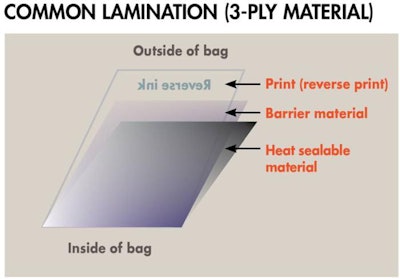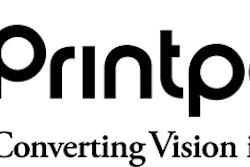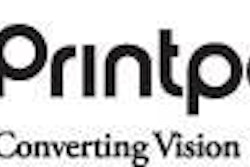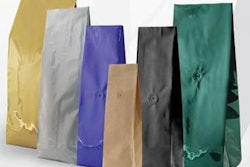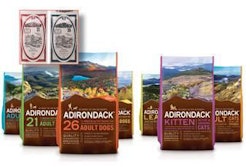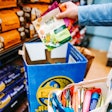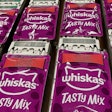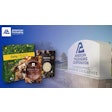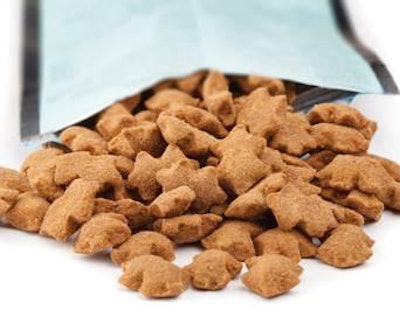
Selling petfood products is just as much, if not more, about the human purchaser as it is about the pet consumer. More and more potential customers are looking for that perfect bag of dog or cat food, and are willing to spend the money to get it. But what does that perfect bag look like? What do those involved in petfood packaging need to focus on in order to meet the needs of petfood manufacturers, who in turn must meet the desires of the consumer—both human and animal?
“Packaging has never been more important in terms of product differentiation and shelf appeal,” said Dan Staker, executive vice president of Plastic Packaging Technologies LLC (PPT). “Without question, the package is really used to sell the product. As such, the petfood industry continues to seek new product configurations and innovative printing technologies to ensure their products stand out on the shelf. Petfood companies are transitioning away from multi-wall paper packaging to flexible plastic packaging, which provides an opportunity for enhanced graphics while also reducing breakage (spoilage), improving the functionality of the packaging for consumers and providing sustainability benefits.”
Innovation, convenience and sustainability are the consistent buzzwords traveling through the petfood packaging industry, and with good reason. “[We’re seeing] packaging functionalities like re-closable bags and pouches that enhance consumer convenience and efficiency becoming more important in purchasing decisions,” said Ron Fasano, market manager for Prolamina.
Packaging companies are striving to meet these growing needs head-on by shifting their focus from metal and paper packaging to versatile plastic options, ensuring plenty of room for innovation on the packaging, and adding consumer-friendly attributes such as re-sealable closure features and handles. “Flat bottom pouches are an example of a different style, where the flat bottom allows the pouch to stand up and serve as a billboard to display the packaging graphics,” said Bryan Saxe, marketing supervisor at Flair Flexible Packaging Corporation. “Textures include metallic inks, matte/partial matte finishes, pre-matte films and Kraft paper which gives the packaging more depth and dimension, and makes it stand out on store shelves.”
PPT has more than doubled its available flat-bottom box pouch and single-web quad bag production capacity to support the changing trends. “PPT has an expansive product offering, including laminated rollstock, stand-up reclosable pouches, flat-bottom side-gusseted box pouches, pinch-bottom box pouches, single-web laydown quad bags, inno-lok packaging and liquid pouches/packaging,” said Staker. “These products incorporate the latest technology for press-to-close zippers, slider zippers, double-track zippers, laser scoring, ‘hook-to-hook’ closures, fitments, spouts and other innovative features.”
Bulk packaging continues to get upgrades, as well. Flair Flexible Packaging offers FLTR film, which is puncture, tear and slip resistant and is ideal for bulk packaging, according to the company. “With rotogravure printing available, this packaging provides the strength and durability to protect the product while also incorporating high-quality printed graphics,” said Saxe. Flair also provides various stand up, flat bottom and retort pouches for food and treats, customizing structures where necessary to meet customers’ product requirements.   Â
What makes these types of packaging so popular? Petfood packaging is increasingly requiring the same performance and safety as human food packaging, according to Printpack Inc. As a result, premium graphics, packaging design and consumer convenience now feature across the full spectrum of petfood packaging, from premium to private label, bringing forward the importance of packaging materials that complement these needs.
“Laminate and woven bags are typically made of two or more layers of materials/polymers,” said Robert Hepburn, vice president of sales for Pacific Bag. “These materials are laminated together to make the ‘ideal’ package. These bags typically are reverse printed with attractive graphics and as they are printed on the inside of the outer layer of material, the ink cannot get scratched, rubbed off or damaged (see Figure 1).”
Bags that present nicely on store shelves, such as side gusseted standing or layflat laminate bags, also cater both to current consumer desires and manufacturer needs. “These bags typically have attractive graphics that display nicely on the shelf,” said Hepburn. “They can be designed to stand up or lay flat on the shelf. As the bags are heat sealable they can be made to be hermetically sealed.” These bags have many features that suit the current market, including folded and glued bottoms for large billboard at the bottom of the bag, quad seals for a seamless/uninterrupted back panel, four distinct panels for graphics, multiple air release methods if needed, PTC zippers, sliders and other enclosure devices and built in handles.
Stand-up re-sealable pouches and block/square-bottom bags meet many of the same needs in the same ways: room for attractive graphics, ability to stand on store shelves for maximum presentation, and extra features such as tear notches and multiple re-closure options for consumer convenience.Â
According to the petfood packaging industry, these trends will remain prominent through 2015, and manufacturers are planning accordingly. “One of the aspects that Flair will continue to focus on is high-quality rotogravure printing,” said Saxe. “Flair instituted its detailed color management system, which was designed to match customers’ colors as closely as possible and deliver consistency time after time. This system encompasses the entire print process, as Flair is involved with everything from artwork creation through the final printed product. Spot colors and process image colors are carefully analyzed and customized where necessary to ensure proper reproduction.”
PPT said it plans to continue investing significant financial resources in flat-bottom box pouch, pinch-bottom box pouch and single-web quad bag capacity in 2015 to support the continuing trends towards these formats. PPT is also in the midst of a facility expansion, which will enable the company to provide an even higher level of responsiveness to its customers, according to the company. “The trend away from multi-wall paper bags and rigid containers continues to accelerate,” said Staker. “Large pet care companies and co-packers have been investing in the equipment and infrastructure to support the transition to these new packaging formats after many years of thoughtful consideration.”
Printpack said it expects continued conversion from paper to plastic packaging, as well as advancements in sealing and re-sealing technology. In 2014 the company released woven propylene bags designed to be closed with next-generation sealing methods.
Prolamina said it continues to focus on staying abreast of consumer needs. “Currently, we are fully analyzing the important organoleptic properties of our packages, both through lamination and extrusion, to ensure that we are meeting the exacting requirements of the pet care market,” said Fasano.
The consumer, as always, continues to be king. And right now, that means providing eye-catching, convenient packaging for petfood products—something the packaging industry is already well set up for.Â
